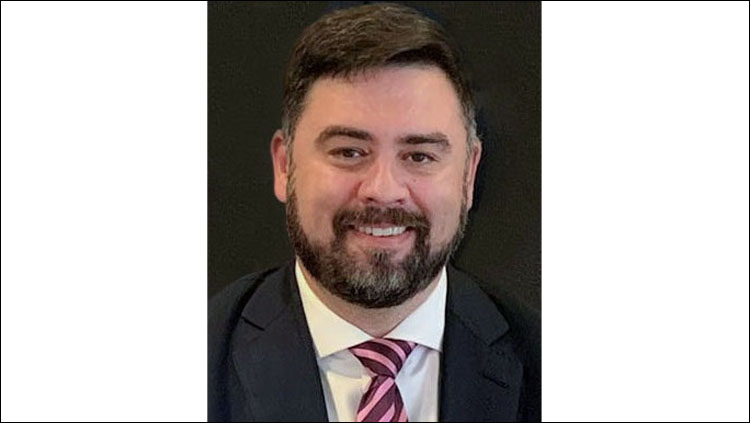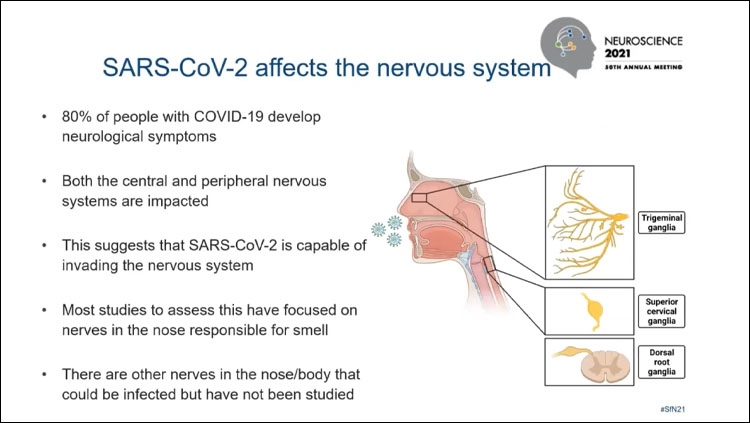Neuroscience 2021 Ushers New Era of Virtual Annual Meetings
Nearly 14,000 participants from around the world gathered virtually for Neuroscience 2021, held November 8–11, 2021. Originally scheduled to be held with both a virtual and in-person component, Neuroscience 2021’s in-person program was eliminated once it became clear that almost half of the program speakers and presenters indicated they would not travel to Chicago, the site of the in-person annual meeting.
SfN's 50th annual meeting was the first to be held entirely virtually, evolving – with some hiccups and technical challenges – to meet a moment in time defined by pandemic restrictions and widespread adoption of virtual meeting capabilities.SfN's 50th annual meeting was the first to be held entirely virtually, evolving – with some hiccups and technical challenges – to meet a moment in time defined by pandemic restrictions and widespread adoption of virtual meeting capabilities.
The virtual format drove significant changes to the structure of the annual meeting, from the daily schedule to individual poster sessions. Mindful of the digital-learning environment, the daily schedule was reimagined to minimize mental task switching by creating separate blocks of time for talks (e.g., lectures, symposia) and poster presentations. The daily schedule alternated what content was offered in the morning and afternoon to accommodate the fact that attendees were participating from numerous time zones.
To recreate the social aspects of a physical poster hall, Neuroscience 2021 virtual poster presenters gathered in virtual conference rooms with up to nine other presenters in their session, where they could share their related work with each other. Rather than waiting alone for attendees to arrive, these group discussions helped presenters build their networks and share their science with a larger number of meeting attendees. Unfortunately, despite testing, the technical demand of hosting the multitude of live poster group discussions destabilized the annual meeting’s software platform for sessions scheduled for the afternoon of November 8; sessions from November 8 were rescheduled for the afternoon of November 11.
NBC News broadcast a piece on COVID-19 and its long-term impacts on the brain, while NPR ran a story on what neuroscientists have learned about how the coronavirus infects brain cells.Neuroscience 2021’s virtual program was as diverse as ever. Several panels used the 50th annual meeting to reflect on the progress the neuroscience field and community has made over the decades. The Dialogues lecture featured Sandro Kereselidze, co-founder of ARTECHOUSE, the organization with whom SfN collaborated to create the dynamic, first of its kind Life of a Neuron digital art, science, and technology exhibit. The popular Dual Perspectives session was expanded to three talks exploring induced pluripotent stem cells, artificial intelligence, and dopamine. Speakers in the Storytelling Session took a brave step and publicly discussed their greatest failures.
Press coverage of Neuroscience 2021 appeared in high-profile publications. For example, NBC News broadcast a piece on COVID-19 and its long-term impacts on the brain, while NPR ran a story on what neuroscientists have learned about how the coronavirus infects brain cells. These stories originated from the 10 press conferences organized by SfN and held in the days just before the annual meeting.
The Graduate Fair and Exhibit Hall remained big draws for graduate programs and exhibitors, respectively. Almost 60 neuroscience programs and 238 exhibitors made use of virtual booths at Neuroscience 2021.



















